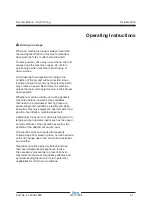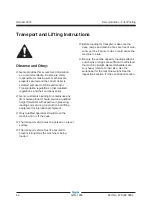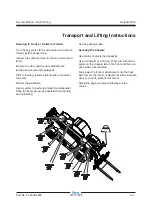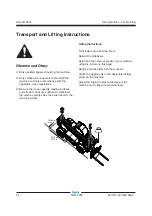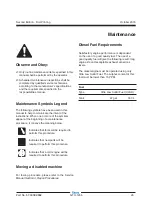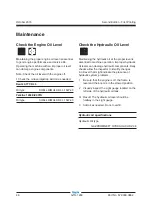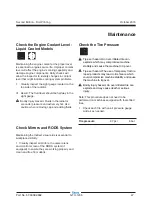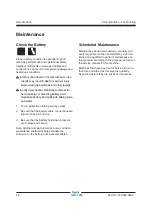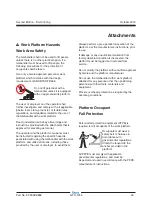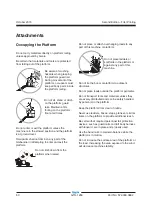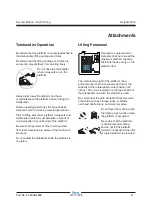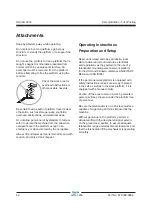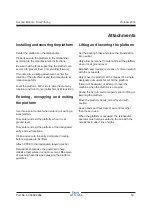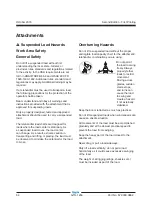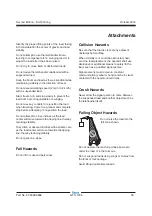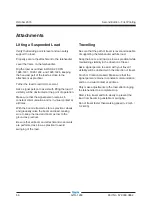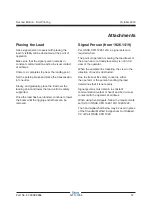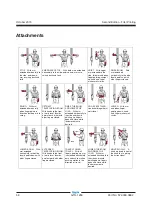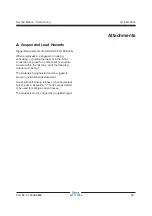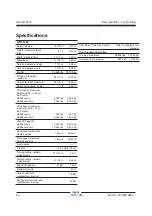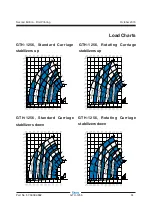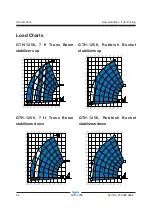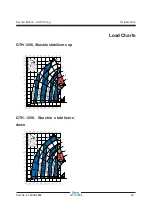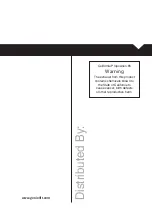
October 2015
Second Edition - First Printing
Part No.
57.0009.0662
GTH-1256 55
Attachments
Identify the proper lifting points of the load, taking
into consideration the center of gravity and load
stability.
Do not attempt to use the telehandler frame-
leveling to compensate for a swinging load or to
adjust the load after it has been raised.
Do not try to move fixed or obstructed loads.
Do not leave the telehandler unattended with a
suspended load.
Keep the boom and load as low as practical while
maintaining visibility in the direction of travel.
Do not exceed walking speed (2 mph / 3.2 km/h)
with a suspended load.
Start, travel, turn and stop slowly to prevent the
load from becoming unstable or swinging.
Do not use any controls to re-position the load
when traveling. Come to a gradual and complete
stop before attempting to re-position the load.
Do not attempt to cross inclines as the load
center will move towards the tipping line, thereby
reducing stability.
Only climb or descend inclines with extreme care
as the load center will move towards the tipping
line, thereby reducing stability
Do not park on a slope.
Fall Hazards
Do not lift or suspend personnel.
Collision Hazards
Be sure that the load is clear of any adjacent
obstacles before lifting.
When visibility is or could be obstructed, near
or at the load placement, the operator shall use
alternative or additional means to safely lift the
load, such as a qualified signal person.
Signal persons must remain in constant
communication (verbal or hand) and be in visual
contact with the operator at all times.
Crush Hazards
Never allow the signal person to come between
the suspended load and another object (such as
the telehandler itself).
Falling Object Hazards
Do not raise the load into the
fall zone shown.
Do not operate the machine while people are
under the load or in the fall zone.
Do not suspend loads using slings or chains from
the forks or fork carriage.
Avoid lifting double tiered loads.

